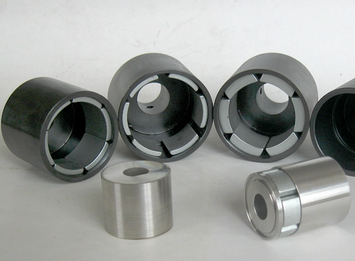Coupling alignment requirements
The alignment requirements of the coupling are crucial to ensure the normal operation of mechanical equipment. The following is a detailed explanation of the alignment requirements of the coupling:
1. Definition of alignment
The movement center lines of the two shafts are in a straight line at the connection point, which is called shaft alignment. The rotors of the unit are connected by couplings to form a shaft system to transmit motion and torque. Due to the installation error of the machine, the deformation after loading, and the uneven settlement of the machine foundation, the axis parallel displacement, axis angle displacement or comprehensive displacement between the axes of the rotors are caused when the machine is in working state, which is collectively referred to as coupling misalignment.
2. The importance of alignment requirements
Reducing energy consumption: Good alignment can save 2%~17% of energy consumption.
Reducing the failure rate: Almost 50% of the shutdown failures of rotating machinery are caused by misalignment, and 60% of the mechanical failures of the rotor system are also caused by misalignment.
Protecting equipment: Misalignment will cause additional force on the bearing during operation, which will cause heating, wear, and even damage to the bearing. At the same time, it will also generate greater noise and vibration, accelerating the wear of the coupling connection.
3. Specific content of the requirements for centering
Bearing installation accuracy: First, ensure the bearing installation accuracy on the shaft to make the shaft running center stable.
Axial and radial offset: The axial and radial offsets of the two shafts should be within a certain range, which is generally required to be less than 0.5 mm.
Adjustment order: When adjusting the centering, it is best to adjust the axial direction first, then adjust the up and down, then adjust the left and right, and finally adjust the torsion.
Floating amount compensation: The adjustment of the centering should take into account that there is generally a floating amount when the main shaft rotates, which is about 0.1~0.3mm. This floating amount should be compensated according to the measured radial deflection.
Requirements for specific types of couplings:
Gear coupling: Because there is a gap between the teeth and the ends, and the tooth top is made into an arc, it allows for larger radial displacement and angular displacement, but it is easy to sharpen the tooth surface and cause vibration, so the length of the outer tooth should be greater than the length of the inner tooth.
Universal coupling: It needs to be used in pairs. When installing, the two equal forks connected to the shaft should be on the same plane, and the angles between the driving shaft, the driven shaft and the intermediate shaft should be equal to reduce the additional dynamic load.

Alignment accuracy: For high-precision mechanical equipment, the alignment accuracy requirements are higher, and professional equipment such as theodolite, total station or laser alignment instrument may be needed for measurement and adjustment.
4. Alignment method
Mechanical method: Use measuring tools such as ruler and micrometer for rough and fine adjustment.
Laser alignment instrument: Currently, the more ideal precision alignment instrument can quickly and accurately complete the alignment work.




